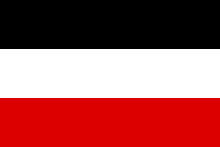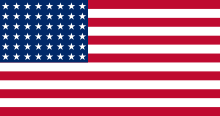St. Petersburg 1914 chess tournament
The tournament celebrated the tenth anniversary of the St. Petersburg Chess Society. The president of the organizing committee was Peter Petrovich Saburov. Members of the committee were: Boris Maliutin, Peter Alexandrovich Saburov, and O. Sossnitzky.[1] They intended to invite the present top twenty chess players, with world champion Emanuel Lasker, challenger José Raúl Capablanca, and the two winners of the All-Russian Masters' Tournament 1913/14 (Alexander Alekhine and Aron Nimzowitsch). Unfortunately, Amos Burn, Richard Teichmann, and Szymon Winawer declined for reasons, such as old age. From the other side, Oldřich Duras, Géza Maróczy, Carl Schlechter, Rudolf Spielmann, Savielly Tartakower, Milan Vidmar and Max Weiss could not accept due to tensions of Russia with Austria-Hungary in the year 1914. Finally, eleven top players from Germany, France, United Kingdom, United States, Cuba, and Russian Empire were accepted. According to the unofficial Chessmetrics ratings, the tournament was (as of March 2005) the 13th-strongest tournament in history (in terms of the top players participating), and the 5th-strongest ever held up until that time.[2]
The players were well compensated for their expenses. Lasker got an additional 4500 Rubles for playing in his first tournament in five years. Prizes or money for draws and wins had to be earned. The main event lasted from 21 April to 22 May 1914. The games were played at the St. Petersburg Chess Club in the afternoon and evening. The time control was 30 moves in 2 hours, followed by 22 moves in 1½ hours and 15 moves per hour for the rest of the game.[3]
Preliminaries
The preliminaries were held as a single round-robin tournament, with the top five places qualifying for the final. Capablanca played superior chess in the preliminaries. The great surprise was the elimination of Akiba Rubinstein. The elite of Sankt Petersburg was present on a grand banquet at the end of the preliminaries. Sergei Prokofiev gave a piano recital.
The results and standings:[4]
# Player 1 2 3 4 5 6 7 8 9 10 11 Total 1  José Raúl Capablanca (Cuba)
José Raúl Capablanca (Cuba) * ½ ½ 1 ½ 1 ½ 1 1 1 1 8 2  Emanuel Lasker (German Empire)
Emanuel Lasker (German Empire)½ * ½ ½ ½ 0 1 ½ 1 1 1 6½ 3  Siegbert Tarrasch (German Empire)
Siegbert Tarrasch (German Empire)½ ½ * ½ ½ 1 ½ 1 1 0 1 6½ 4  Alexander Alekhine (Russian Empire)
Alexander Alekhine (Russian Empire)0 ½ ½ * 1 ½ 1 ½ ½ ½ 1 6 5  Frank James Marshall (United States)
Frank James Marshall (United States)½ ½ ½ 0 * 1 ½ ½ 1 1 ½ 6 6  Ossip Bernstein (Russian Empire)
Ossip Bernstein (Russian Empire)0 1 0 ½ 0 * ½ ½ ½ 1 1 5 7  Akiba Rubinstein (Russian Empire)
Akiba Rubinstein (Russian Empire)½ 0 ½ 0 ½ ½ * ½ ½ 1 1 5 8  Aron Nimzowitsch (Russian Empire)
Aron Nimzowitsch (Russian Empire)0 ½ 0 ½ ½ ½ ½ * 0 ½ 1 4 9  Joseph Henry Blackburne (United Kingdom)
Joseph Henry Blackburne (United Kingdom)0 0 0 ½ 0 ½ ½ 1 * 0 1 3½ 10  Dawid Janowski (France)
Dawid Janowski (France)0 0 1 ½ 0 0 0 ½ 1 * ½ 3½ 11  Isidor Gunsberg (United Kingdom)
Isidor Gunsberg (United Kingdom)0 0 0 0 ½ 0 0 0 0 ½ * 1
Final
The final tournament was a double-round tournament among the five players. Since the results of the preliminaries carried over into the finals, Capablanca with a 1½-point lead was a heavy favorite to win the tournament.[5] In the first half of the finals, Lasker narrowly escaped a loss against Capablanca, which would have virtually decided the tournament. Lasker made up half a point of the difference between himself and Capablanca, with the scores standing at Capablanca 11, Lasker 10, Alekhine 8½, Marshall 7, Tarrasch 6½.[6]
In the 19th round, Lasker won a now-famous game against Capablanca with the Exchange Variation of the Ruy Lopez, trading queens on the sixth move (1.e4 e5 2.Nf3 Nc6 3.Bb5 a6 4.Bxc6 dxc6 5.d4 exd4 6.Qxd4 Qxd4 7.Nxd4) and then outplaying Capablanca in the endgame.[7][8][9] Luděk Pachman remarks that Lasker's choice of opening was a masterstroke, since Capablanca was intent on simplifying the game to obtain a draw, and the line Lasker chose requires Black to play actively in order to exploit his advantage of the bishop pair and not allow White to exploit his superior pawn structure.[10] Capablanca, intent on avoiding complications, played too passively and was routed by Lasker.[8] In the following round, a shaken Capablanca lost as White from a superior position against Tarrasch. This allowed Lasker (who scored a remarkable 7/8) to overtake Capablanca, winning the tournament by a half point.[11][12][13]
Lasker won 1200 rubles, Capablanca 800 rubles, Alekhine 500 rubles, Tarrasch 300 rubles, and Marshall 250 rubles. In addition, there was a Brilliancy Prize Fund, of which Capablanca was awarded 125 rubles for his win over Bernstein, Tarrasch was awarded 75 rubles (Second Prize) for his win over Nimzowitsch, and Blackburne won 50 rubles (Special Brilliancy Prize) for his win over Nimzowitsch. The prize fund was more than covered by the record "gate" of 6,000 rubles from the spectators.[14]
The final results and standings:[4]
# Player Prel. 1 2 3 4 5 Total 1  Emanuel Lasker (German Empire)
Emanuel Lasker (German Empire) 6½ ** ½1 11 1½ 11 13½ 2  José Raúl Capablanca (Cuba)
José Raúl Capablanca (Cuba) 8 ½0 ** ½1 10 11 13 3  Alexander Alekhine (Russian Empire)
Alexander Alekhine (Russian Empire) 6 00 ½0 ** 11 1½ 10 4  Siegbert Tarrasch (German Empire)
Siegbert Tarrasch (German Empire) 6½ 0½ 01 00 ** 0½ 8½ 5  Frank James Marshall (United States)
Frank James Marshall (United States) 6 00 00 0½ 1½ ** 8
References
- ↑ The Saburovs by Edward Winter
- ↑ "Formulas". Chessmetrics.com. Retrieved on 2009-02-24.
- ↑ http://www.endgame.nl/stpeter.htm
- ↑ 4.0 4.1 http://xoomer.alice.it/cserica/scacchi/storiascacchi/tornei/1900-49/1914spietroburgo.htm
- ↑ Andy Soltis, The Great Chess Tournaments and Their Stories, Chilton Book Company, 1975, p. 96. ISBN 0-8019-6138-6.
- ↑ Luděk Pachman, Pachman's Decisive Games, Pitman Publishing, 1975, p. 64. ISBN 0-273-31812-8.
- ↑ The Grand International Masters' Chess Tournament at St. Petersburg 1914, David McKay, c. 1915, p. 65.
- ↑ 8.0 8.1 Pachman 1975, pp. 65-67.
- ↑ Soltis 1975, pp. 98-102.
- ↑ Pachman 1975, p. 65.
- ↑ The Grand International Masters' Chess Tournament at St. Petersburg 1914, David McKay, c. 1915, pp. 69-70.
- ↑ Pachman 1975, p. 68.
- ↑ Soltis 1975, pp. 102, 104.
- ↑ The Grand International Masters' Chess Tournament at St. Petersburg 1914, David McKay, c. 1915, p. 4.